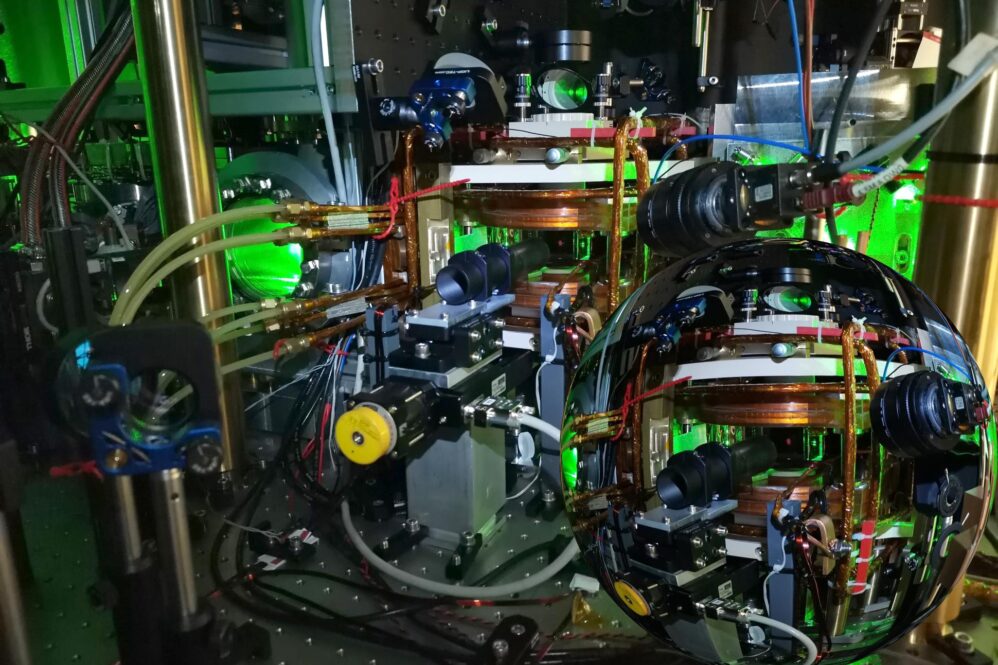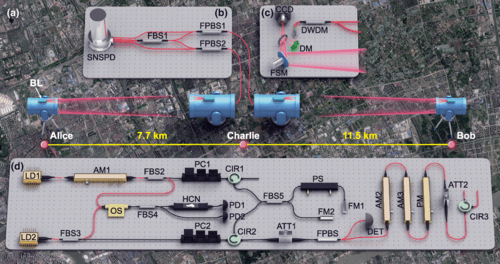In a laboratory experiment, researchers from Heidelberg University have succeeded in realizing an effective spacetime that can be manipulated. In their research on ultracold quantum gases, they were able to simulate an entire family of curved universes to investigate different cosmological scenarios and compare them with the predictions of a quantum field theoretical model.
According to Einstein’s Theory of Relativity, space and time are inextricably connected. In our Universe, whose curvature is barely measurable, the structure of this spacetime is fixed. In a laboratory experiment, researchers from Heidelberg University have succeeded in realising an effective spacetime that can be manipulated. In their research on ultracold quantum gases, they were able to simulate an entire family of curved universes to investigate different cosmological scenarios and compare them with the predictions of a quantum field theoretical model. The research results were published in Nature.
The emergence of space and time on cosmic time scales from the Big Bang to the present is the subject of current research that can only be based on the observation of our single Universe. The expansion and curvature of space are essential to cosmological models. In a flat space like our current Universe, the shortest distance between two points is always a straight line. “It is conceivable, however, that our Universe was curved in its early phase. Studying the consequences of a curved spacetime is therefore a pressing question in research,” states Prof. Dr Markus Oberthaler, a researcher at the Kirchhoff Institute for Physics at Heidelberg University. With his “Synthetic Quantum Systems” research group, he developed a quantum field simulator for this purpose.
The quantum field simulator created in the lab consists of a cloud of potassium atoms cooled to just a few nanokelvins above absolute zero. This produces a Bose-Einstein condensate — a special quantum mechanical state of the atomic gas that is reached at very cold temperatures. Prof. Oberthaler explains that the Bose-Einstein condensate is a perfect background against which the smallest excitations, i.e. changes in the energy state of the atoms, become visible. The form of the atomic cloud determines the dimensionality and the properties of spacetime on which these excitations ride like waves. In our Universe, there are three dimensions of space as well as a fourth: time.
In the experiment conducted by the Heidelberg physicists, the atoms are trapped in a thin layer. The excitations can therefore only propagate in two spatial directions — the space is two-dimensional. At the same time, the atomic cloud in the remaining two dimensions can be shaped in almost any way, whereby it is also possible to realise curved spacetimes. The interaction between the atoms can be precisely adjusted by a magnetic field, changing the propagation speed of the wavelike excitations on the Bose-Einstein condensate.
The paper has been published in Nature.
Reference: Celia Viermann, Marius Sparn, Nikolas Liebster, Maurus Hans, Elinor Kath, Álvaro Parra-López, Mireia Tolosa-Simeón, Natalia Sánchez-Kuntz, Tobias Haas, Helmut Strobel, Stefan Floerchinger, Markus K. Oberthaler. Quantum field simulator for dynamics in curved spacetime. Nature, 2022; 611 (7935): 260 DOI: 10.1038/s41586-022-05313-9



